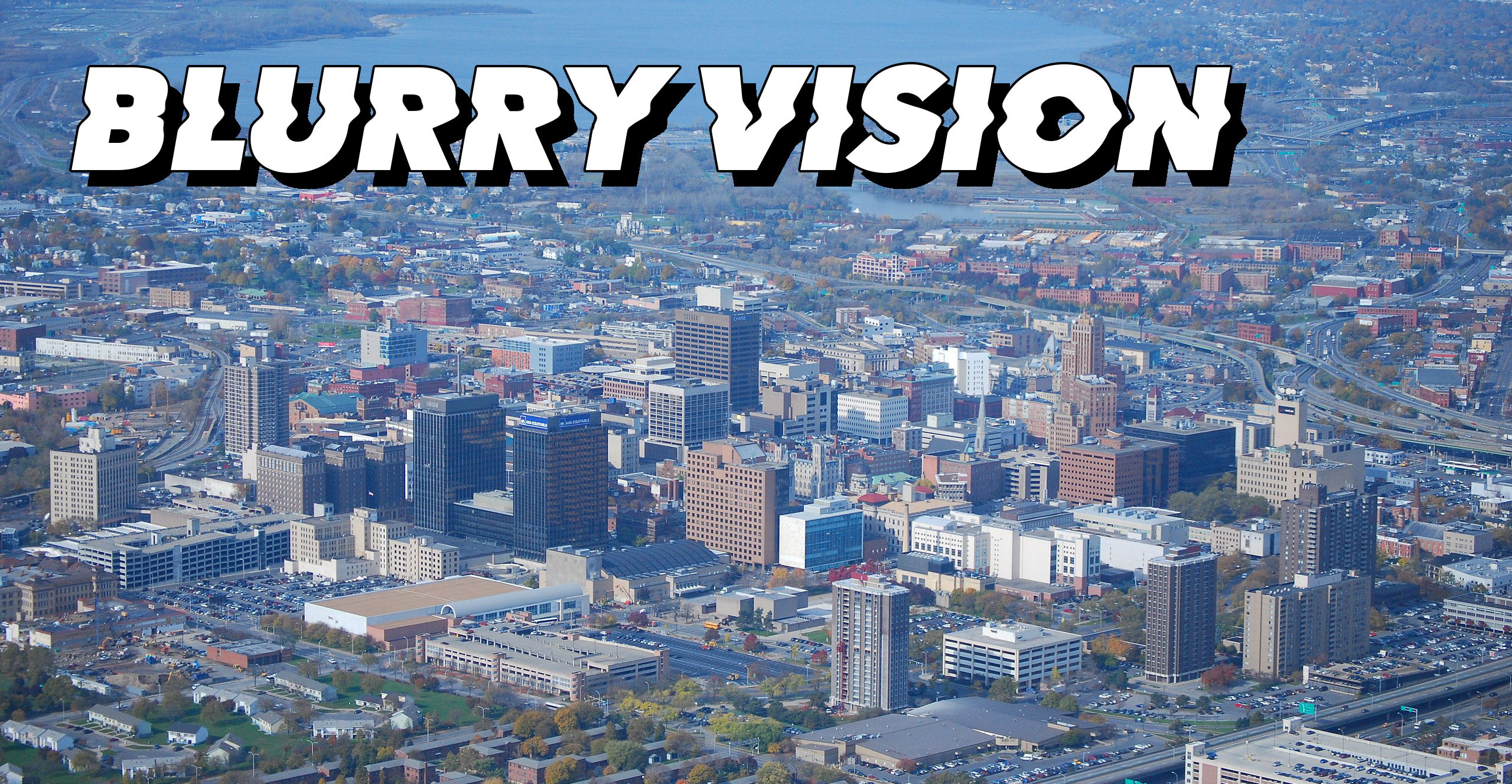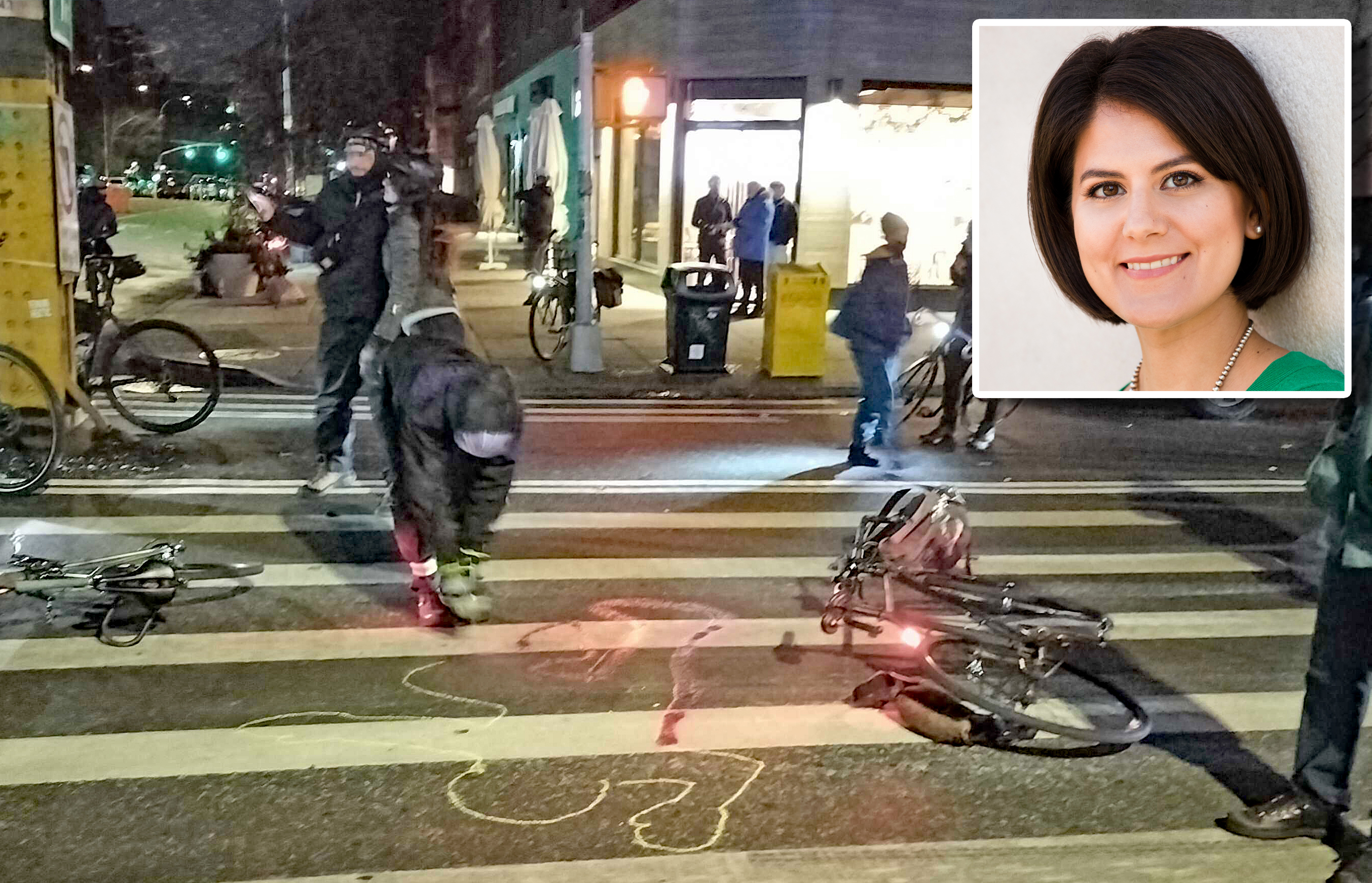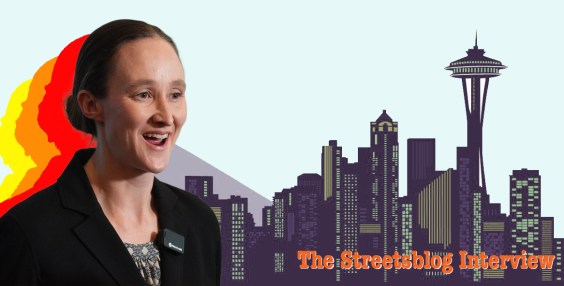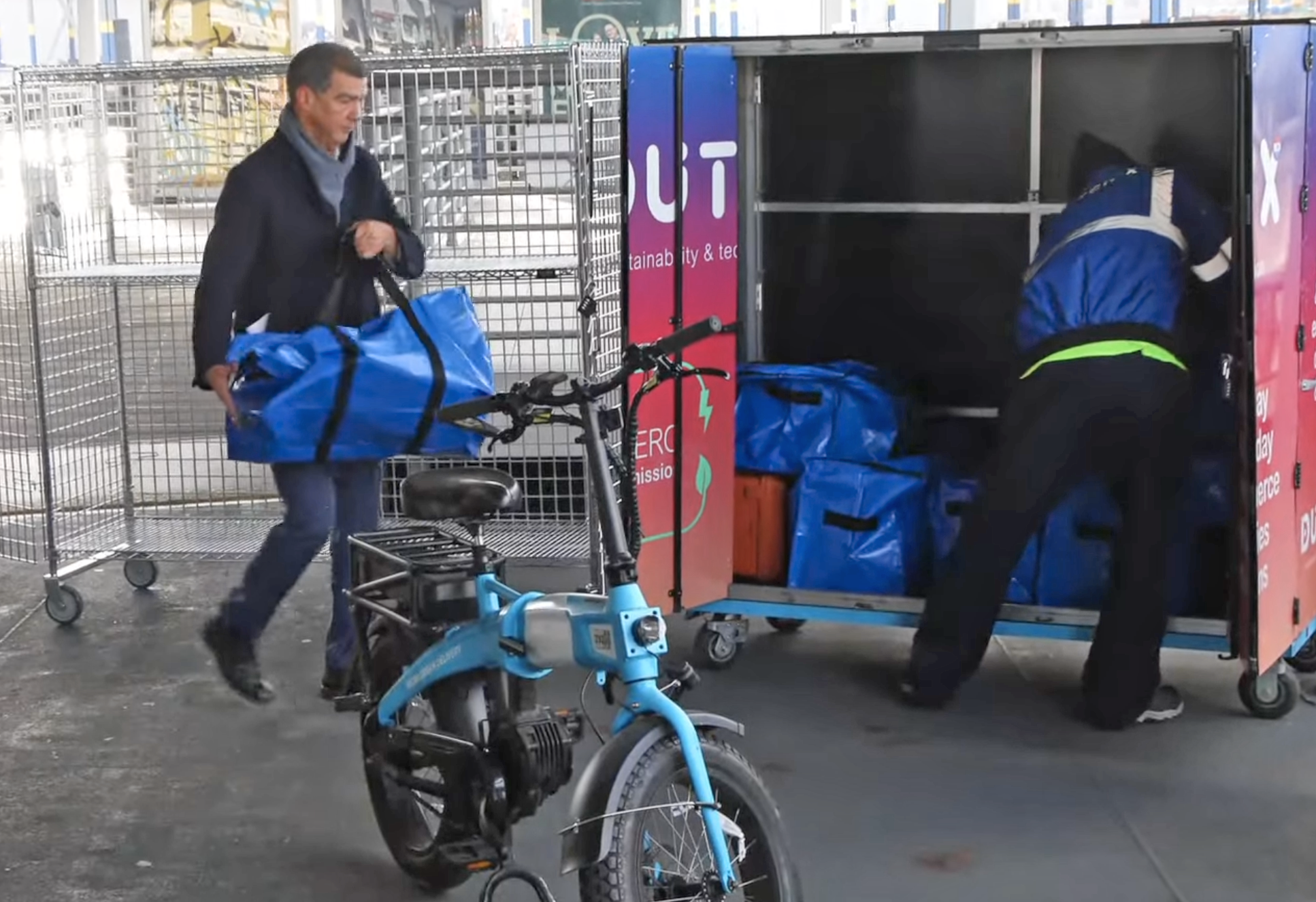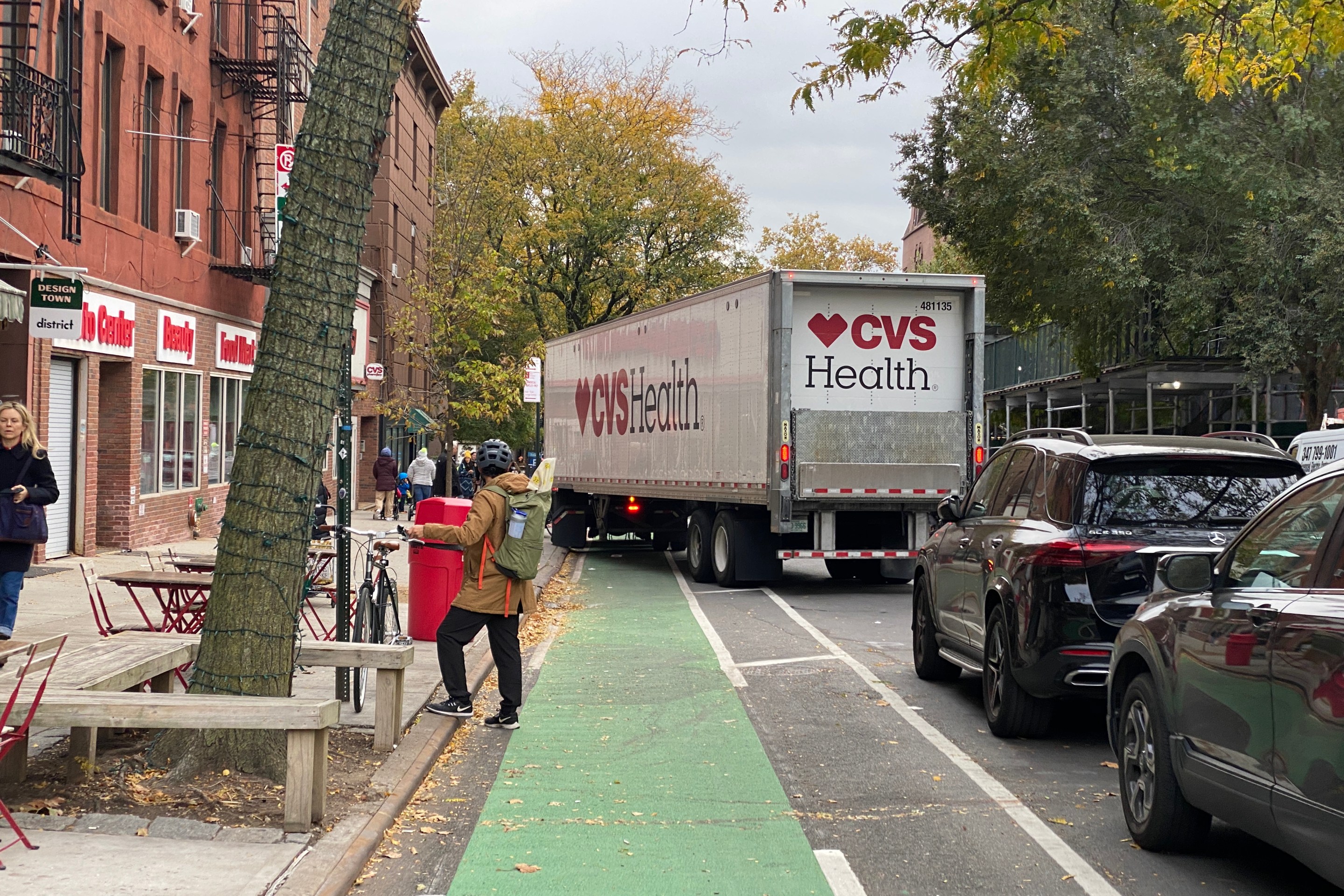A decade-old effort to pass a Vision Zero plan and tap into a pot of federal money that may be drying up has stalled in Syracuse — and everyone is finger-pointing.
Syracuse has long had a road violence problem. According to federal stats covering 2019 through 2023, there were 567 car crashes in the city, causing 42 deaths and 608 serious injuries. Nearly half of the fatal crashes involved a pedestrian or bicyclist. Syracuse’s fatality rate (deaths per year per 100,000 residents) is 7.27, which is 40 percent higher than the state’s rate and 150 percent higher than New York City’s below-3.0 rate.
“People are dying,” said Alex Lawson, a cyclist and the chair of Moving People Transportation Coalition, a volunteer group that advocates for a better regional transportation system. “Why aren’t we doing everything we can to fix it?”
The crisis reached a peak in July, when two students at Syracuse University were fatally struck by the driver of a dump truck, a 38-year-old man was killed by a different truck driver, and a 7-year-old boy was seriously injured by the driver of an SUV.
Yet even with two deaths in a month in a city that averages about eight per year, a Common Councilor withdrew the Vision Zero plan from a vote. It languishes to this day.
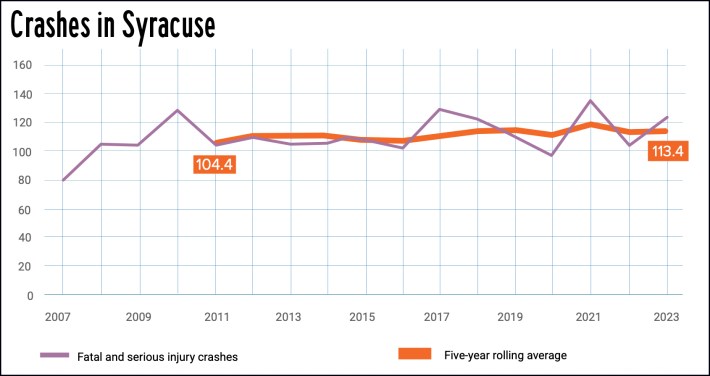
The 'Vision'
The idea of joining the Vision Zero movement has been a long time coming in the Salt City. But the city has moved in fits and starts.
A bicycle master plan, created in 2012, outlined 88 projects to be finished by 2040. But fewer than 10 projects have been completed, according to a city audit. And a lot of the bike infrastructure in town is “sharrows,” the ignoble chevrons of death — this in a city where three out of every 10 households don’t have access to a car.
There have been some positive strides: A $2.25-billion effort will replace the elevated 1-81 viaduct with a street grid. A municipal sidewalk program has led to better winter cleaning. A bike lane on Grant Boulevard was expanded. And there’s been a speed hump pilot since 2021.
This year Syracuse became the first city in New York State with school zone speeding, school zone red light, and school bus stop-arm camera programs. In the first two weeks of the camera program, more than 60,000 warnings were issued in 36 locations.
Obviously, safety was on Mayor Ben Walsh’s agenda, but it wasn't until his 2023 State of the City address that there was a commitment to hiring a Vision Zero consultant.
Walsh didn't start a war on cars; in reality, the battle came to him: A few months earlier, semiconductor maker Micron announced that it would create nearly 50,000 jobs at a new factory nearby.
“If those people are all in cars,” said Lawson, “we’re going to have bad traffic and we’re going to have more deaths.”
Walsh’s administration also saw an opening to get Vision Zero funding under the federal Department of Transportation’s Safe Streets and Roads for All program, which puts up 80 percent of the funding if localities commit to finding the other 20 percent. The $5-billion Biden-era program still has $2 billion remaining and has not yet been killed by the Trump administration (though earlier this year, U.S. DOT warned applicants that Safe Streets and Roads for All grants that actually seek to make roadways safer by, say, implementing road diets or protected bike lanes “would be viewed less favorably by the Department").
Still, on paper at least, the key to getting any Safe Streets for All grant is having all the local players on the same page. Cities that have a “comprehensive safety action plan” remain more likely to get the Safe Streets for All funding, according to the U.S. DOT’s website.
Creating a Vision Zero plan takes time. In 2023, the city spent $300,000 to hire TYLin (formerly Sam Schwartz Engineering) to conduct public engagement, host pop-up events and create an interactive map.
The resulting Vision Zero Action Plan aimed for a 35-percent reduction in deaths or serious injuries by 2035 and a reduction to zero by 2055. It would reach those goals by identifying infrastructure improvements at intersections and roads where half of the serious or fatal crashes took place. It would also evaluated a 25-mph speed limit in a town where 30 miles per hour is generally in effect.
The 71-page tome was completed in May so the city could apply for federal funding.
And then, the stall.
A storm ‘Gethers’
Common Councilor Amir Gethers put the Vision Zero plan on the July 7 Public Works Committee meeting agenda only to then block the item from discussion. Any other councilor could have brought the item to the floor, but none did.
“I didn’t do that because I didn’t think there were five votes [a majority] there,” said Councilor Jimmy Monto.
Gethers appears to be the biggest impediment. On July 21, Syracuse Chief Operating Officer Conor Muldoon presented the plan to Gethers's Public Works Committee. In a discussion about the speed limit reduction, Gethers asked, “Is there really going to be a major decrease [in crashes]?”
It is well established, Muldoon said, that lower speeds are associated with fewer crashes. But Gethers was unconvinced, claiming that he didn’t just want to rubber-stamp the Vision Zero plan and then “just go with the flow.”
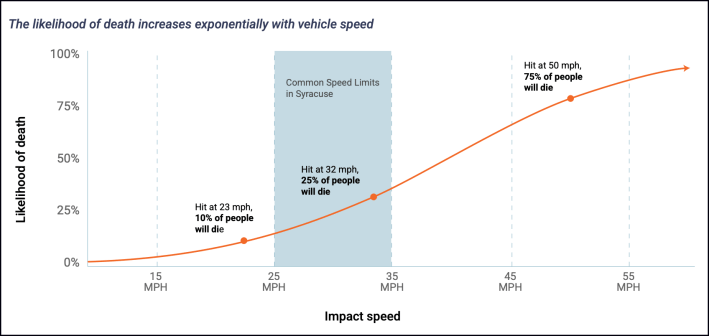
“I just want it to be more structured, of course with the message to the community that we do take this very seriously,” he said, appearing not to take it seriously. He then put a hold on the Vision Zero plan at another Council meeting two weeks later.
The plan has still not passed through his committee.
On a parallel track, on Aug. 11, the Council approved — unanimously — the 20 percent matching commitment, should Syracuse win the federal grant. But, Gethers again blocked a vote on the Vision Zero plan itself. Then, in September, he withdrew it entirely, reportedly “blindsiding” the executive branch.
His opposition to passing the plan made little sense.
“What are we going to do … that’s going to actually have some teeth and actually do something?” Gethers told Syracuse.com after the Sept. 2 meeting. (Gethers did not respond to repeated requests from Streetsblog.)
Muldoon’s frustration is palpable.
“We were very surprised after the request for proposals and selection, the $300,000 consultant cost, two years of significant public outreach with thousands of comments, and Councilor Monto being on the advisory group, receiving no negative feedback from Council,” he told Streetsblog. “And when the time came to say, 'We support this plan,' to have zero communication and have it held and withdrawn was a surprise."
At this point, relations between the mayor’s office and the Council are frayed. “There’s a serious lack of trust,” one insider told Streetsblog.
Fortunately, trust may improve; Walsh is term-limited and out on Dec. 31. And Gethers lost his re-election bid, making Dec. 31 his last day in office, too.
Monto, who chairs the Public Transportation Committee, appears ready to act. On Oct. 14, the Vision Zero plan will be heard by his committee. He’s optimistic it will pass, but not sure what comes next.
“I expect things to get worse as far as federal funding goes for cities like Syracuse,” Monto said. “If council support will help us get grant money, I don’t want to miss an opportunity.”
Muldoon is optimistic, at least, that the city will finally be sending a clear message to the Trump administration.
“It’s important to communicate to the community that this is a plan that all elected leaders are supportive of,” he said.
The Public Transportation Committee meeting will be streamed live on Oct. 14 at 1 p.m.
Editor's note: An earlier version of this story omitted the death in July of Lavaughn Polk, 38.
